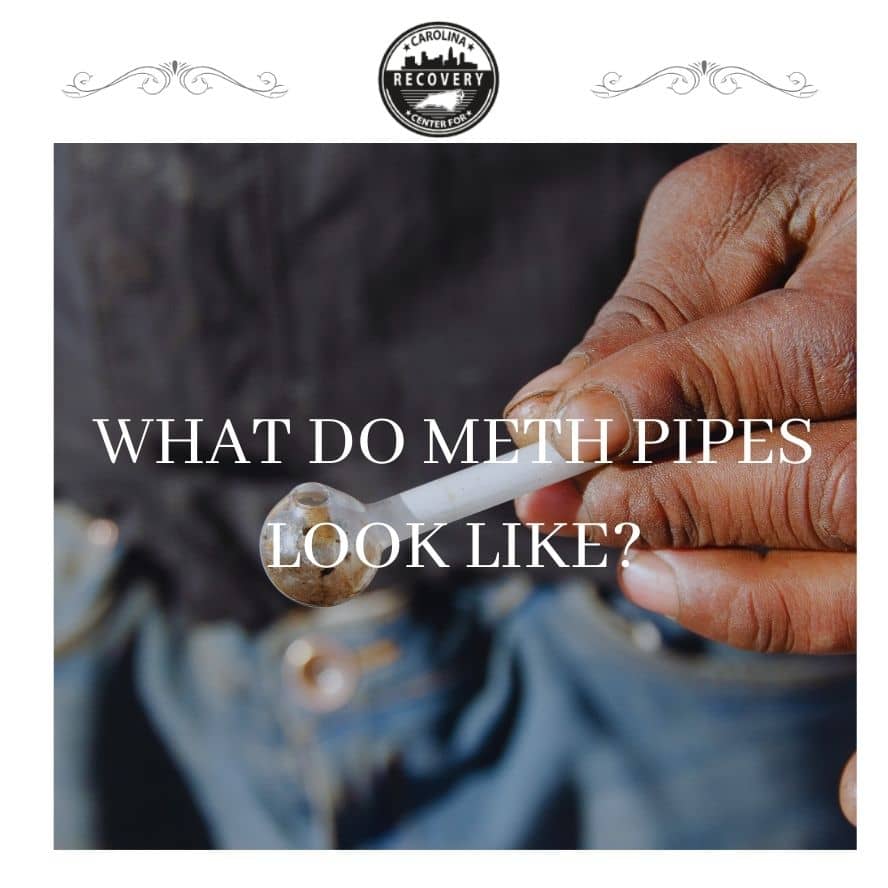What Do Meth Pipes Look Like?

Medically Verified: 2/1/24
Medical Reviewer
Chief Editor

All of the information on this page has been reviewed and verified by a certified addiction professional.
Methamphetamine, commonly known as meth, is a highly potent stimulant drug that is primarily used illegally. While meth might be prescribed under the brand name Desoxyn to treat attention-deficit hyperactivity disorder (ADHD), this is rare.[1] People who abuse meth typically purchase it from drug dealers who are distributing illicitly manufactured meth.
According to the National Institute of Drug Abuse (NIDA), “Among people aged 12 or older in 2021, 0.9% (or about 2.5 million people) reported using methamphetamine in the past 12 months.”[2]
Because of its potency, meth abuse can quickly lead to a full-blown addiction. When someone is addicted to meth, they may begin to behave erratically, have a decreased need for sleeping or eating, and suffer from the symptoms of psychosis.
If you are worried that your loved one is struggling with addiction, being aware of what meth pipes and other paraphernalia look like can help you make an informed decision on whether they need professional help.
What Does a Meth Pipe Look Like?
The most common way to use methamphetamine is by smoking it. If your loved one is abusing meth, you might find meth pipes in their bedroom or other personal spaces. Typically, meth pipes are made out of glass with a long, thin, round stem and a sphere-shaped bowl at the end with a hole at the top.
There are several nicknames for meth pipes, including glass rose, bubbles, pizzo, banger, and Pookie. Meth pipes come in many colors, most commonly blue, green, or clear glass.
While smoking meth is the most common method of administration, there are other ways to abuse it, too. If your loved one is snorting or injecting meth, they may not have a meth pipe at all.
Other Meth Paraphernalia to Be Aware Of
The first thing you should be aware of is what meth actually looks like. More often than not, meth is a white or off-white crystalline substance. It may come in large shards that look like glass or tiny pieces of broken glass.
People who abuse methamphetamine might smoke, snort, inject, or even swallow it. There is also a method of administration known as “hot railing” which involves snorting the smoke of crushed meth after lighting it on aluminum foil. Because there are so many ways to abuse methamphetamine, there are many tools and paraphernalia related to the drug.
If you are worried that your loved one is abusing meth, look out for the following forms of meth paraphernalia:
- Syringes and needles
- Straws
- Meth pipes or makeshift bongs
- Razorblades
- Torch lighters
- Tin foil
- Dollar bills
- Miniature spoons
- Small plastic baggies
- Crystal residue on surfaces
- Small and straight glass pipes
All of the above-mentioned items can be used to abuse meth in some manner. It is important to note that these items might also be used to abuse other drugs. As a result, determining whether your loved one is abusing meth must not rely solely on paraphernalia, but also on behavioral and physical signs of substance abuse.
Signs Your Loved One is Abusing Methamphetamine
If you are concerned that your loved one is abusing meth, you need to be informed of the signs of meth abuse. Meth is an incredibly potent drug that causes very obvious physical and behavioral symptoms. For example, the most well-known signs of meth abuse include sores on the skin, paranoid behavior, insomnia, significant weight loss, and tooth decay.
The most common signs of methamphetamine abuse include:
- Erratic or aggressive behavior
- Inability to sleep for days at a time
- Paranoia and severe anxiety
- Hyperactivity and increased self-confidence
- Significant weight loss from a decreased appetite
- Poor hygiene or compulsive cleaning
- Sores on the skin from picking or believing bugs are crawling under their skin
- Tics or muscle spasms
- Weird movements of the jaw
- Symptoms of psychosis such as hallucinations, delusions, or detachment from reality
- Tooth decay (“meth mouth”)
- Increased symptoms of a pre-existing mental health condition
- A mood that rapidly shifts from hyperactivity to severe depression
- Suicidal ideation
If your loved one displays these symptoms, they are most likely in need of meth rehab. Noticing the paraphernalia in their home only furthers the confirmation that they are abusing meth. Unfortunately, it is very rare to abuse meth without becoming addicted.
Find Help for Meth Abuse and Addiction
Meth addiction is a serious condition that must be treated professionally. Long-term meth abuse can lead to an array of physical and mental health issues, including severe tooth decay, malnutrition, psychosis, and suicidal ideation. The earlier you seek treatment, the better.
At Carolina Center for Recovery, we can provide you with the support and tools you need to achieve long-term sobriety. From evidence-based behavioral therapy to relapse prevention planning and peer support, our meth addiction treatment program can offer you everything you need to regain control over your life.
Contact Carolina Center for Recovery today to learn more about our meth addiction treatment program.
References:

